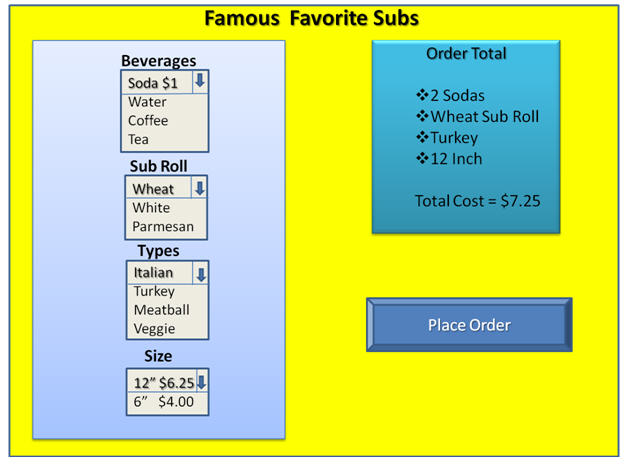Assignment Details
Assignment Description
In Unit 1, you created an application service provider (ASP) project with a single page called Home.aspx. In this assignment, you will add 2 more pages and navigation. You will also create the database containing your products.
Site Framework
The first step is to create the additional pages of your e-commerce site. First, open the project that you submitted for the Unit 1 IP assignment. This project should have a page named Home.aspx, and that page should have the welcome message and description you wrote for the Unit 1 IP assignment.
Using the steps you learned in the Unit 1 Individual Submission project, add the following pages to the site:
- Catalog.aspx: This page will contain the catalog used in the shopping experience. Aside from navigation links, which you will create in the next section below, it will remain empty of content in this submission. You will create the shopping experience in Unit 3.
- ShoppingCart.aspx: This page will contain the shopping cart and a button for the user to check out. Aside from navigation links, it will remain empty of content in this submission. You will create the cart and checkout experience in Unit 4.
Navigation
To use the site, visitors will need to be able to navigate between the 3 pages that your site now contains. Follow the instructions in the Guide to Creating Navigation section of the Unit 2 Individual Submission instructional guide, which is linked below.
Products Collection
To prepare for the products database, you will need to collect some data. You will need 6–8 products to sell. For each one, you will need some information, such as name, description, and price.
These data do not need to represent real-world products, but you will need images to display alongside each product in the catalog. These images can be collected from a search engine and need not accurately show the products you intend to sell. You do not need to reference the source of your images, too. However, when considering your products, remember that a well-made project can be shown to a potential employer in an interview as an example of your work.
To complete this step, follow the Guide to Gathering Product Info section of the Unit 2 Individual Submission instructional guide, which is linked below.
Creating the Database
In Unit 3, you will create the catalog to display the images and data that you have collected in the step above. That catalog will be dynamic, meaning it will display all of the products that are currently available (meaning they’re in your Products table). A static catalog would have to be modified each time you run out of inventory or whenever a new item is added to or removed from the list of products that you sell. A dynamic catalog will automatically adjust its display to show every row of data returned from the database.
To accomplish this in Unit 3, you first need to create the database here in this assignment. Watch the tutorial “Creating the Database” (see Learning Activities), and then create your database by following the Creating the Database section of the Unit 2 Individual Submission instructional guide, which is linked below.
Instructional Guide
Below is a link to the instructional guide for the steps listed above. Follow the instructions that it contains to complete the Unit 2 Individual Submission.
Unit 2 Project Deliverables
Your deliverable for the Unit 2 Individual Project is a ZIP containing your ASP project.

